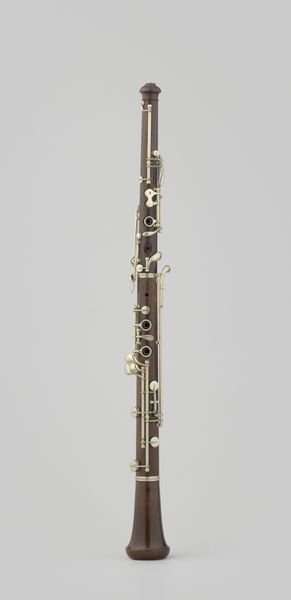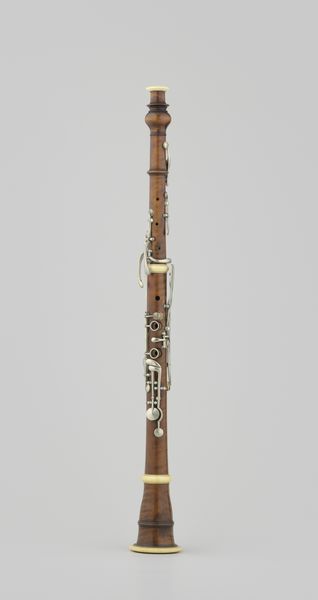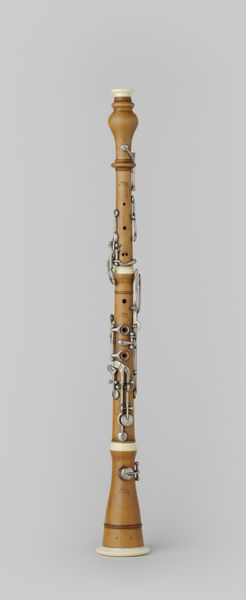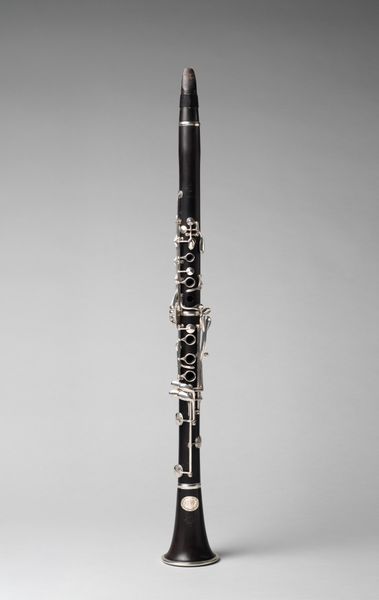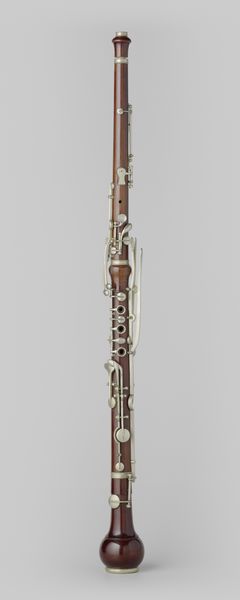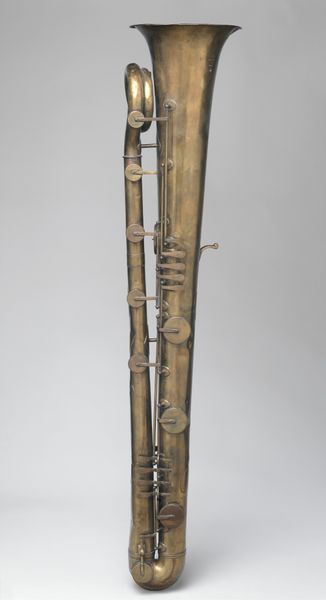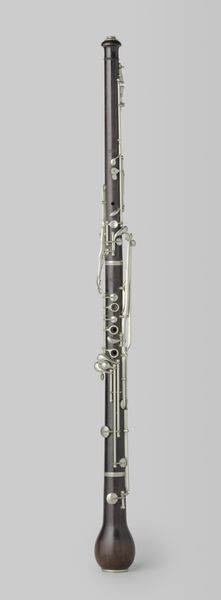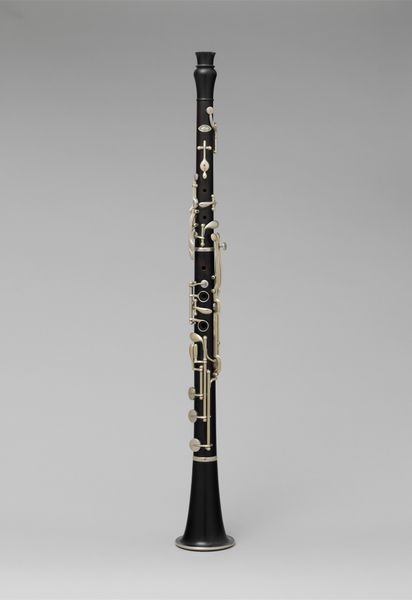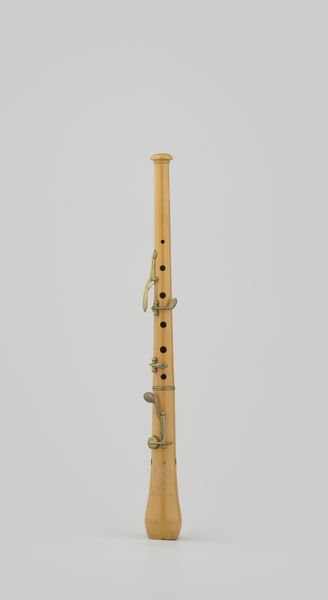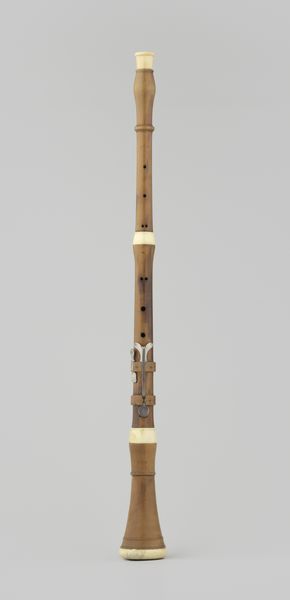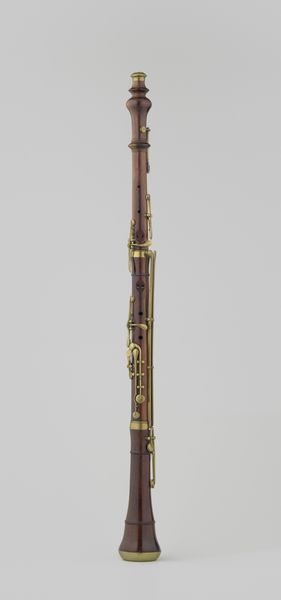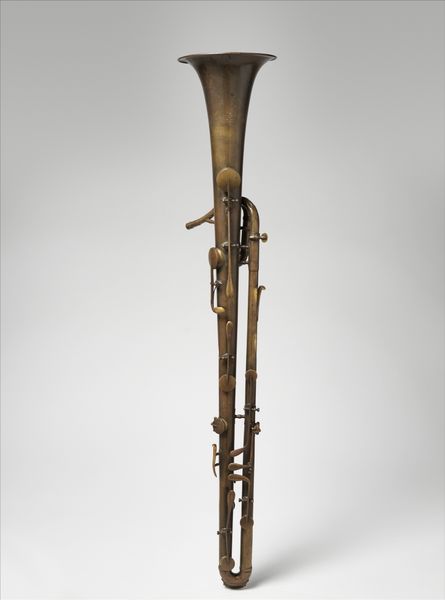
metal, wood
#
metal
#
wood
Dimensions: length 54 cm, diameter 5.7 cm, diameter 2.1 cm, length 43 cm, width 12 cm
Copyright: Rijks Museum: Open Domain
Curator: Here we have an oboe, dating from around 1850 to 1870. Editor: It looks remarkably pristine for its age. A sense of refinement emanates from it—the polished metal keys juxtaposed with the grain of the wood. Curator: Indeed, its preservation allows us to contemplate the societal role of music at that time. The 19th century saw the rise of both domestic music-making and larger-scale orchestral performances. An instrument like this would have been a status symbol. Editor: I’m thinking about who this was made for and the social codes regulating who had access to making or appreciating high culture. Perhaps music, specifically classical music, became a mechanism to reinforce class divisions in this period? Curator: That's an astute observation. Musical instruments and instruction became increasingly linked to middle-class aspirations of refinement and cultural capital. Furthermore, gender played a significant role, as young women from affluent families were often encouraged to learn instruments as a means of attracting a suitable partner. Editor: It's interesting to view something that we would normally assume is an object of pleasure, beauty, and creativity as deeply entwined with social dynamics. This brings forward the power structures operating through and behind art. I would assume such an item was produced with the involvement of several artisans each occupying a different position within their guild system and respective local economy, too. Curator: Precisely. The construction materials of this oboe – the wood and metal – hint at the intersection of different crafts and industries contributing to its existence. It encapsulates more than just an artistic endeavor; it's also about economic structures that were active at the time. Editor: I am struck by its aura; how can such a small thing symbolize so much? Curator: Perhaps, it highlights the powerful and yet often overlooked role of seemingly ‘minor’ artworks as barometers of the grand currents shaping their world.
Comments
No comments
Be the first to comment and join the conversation on the ultimate creative platform.
